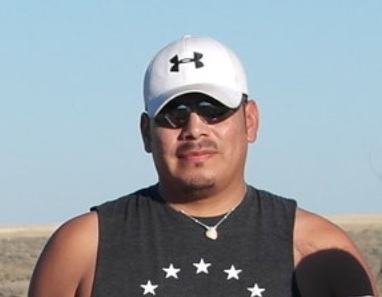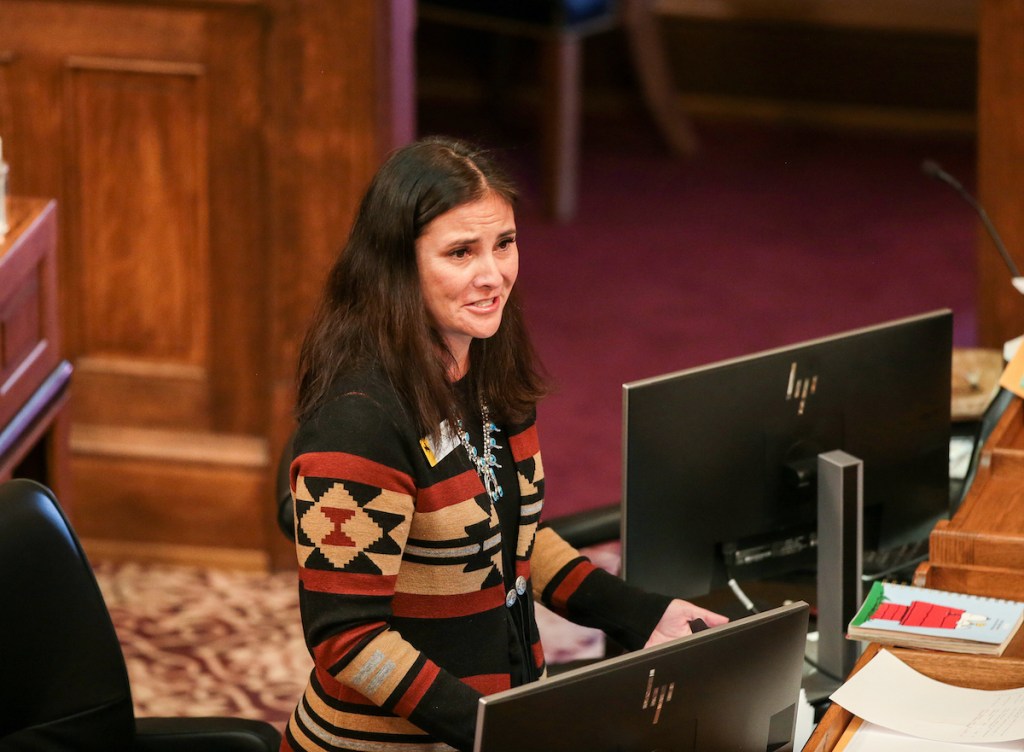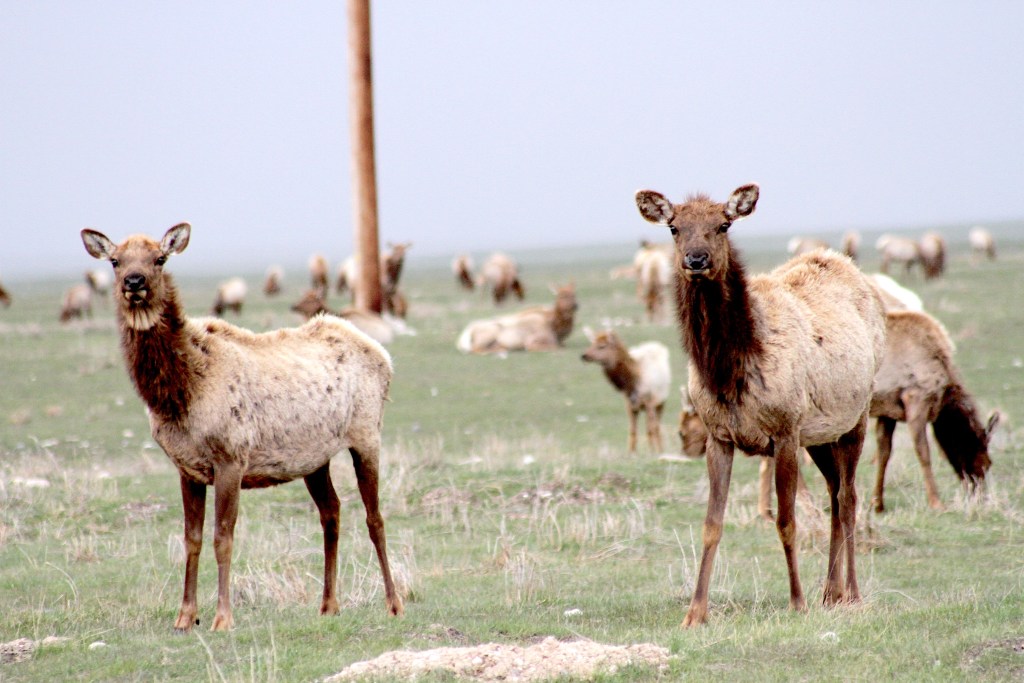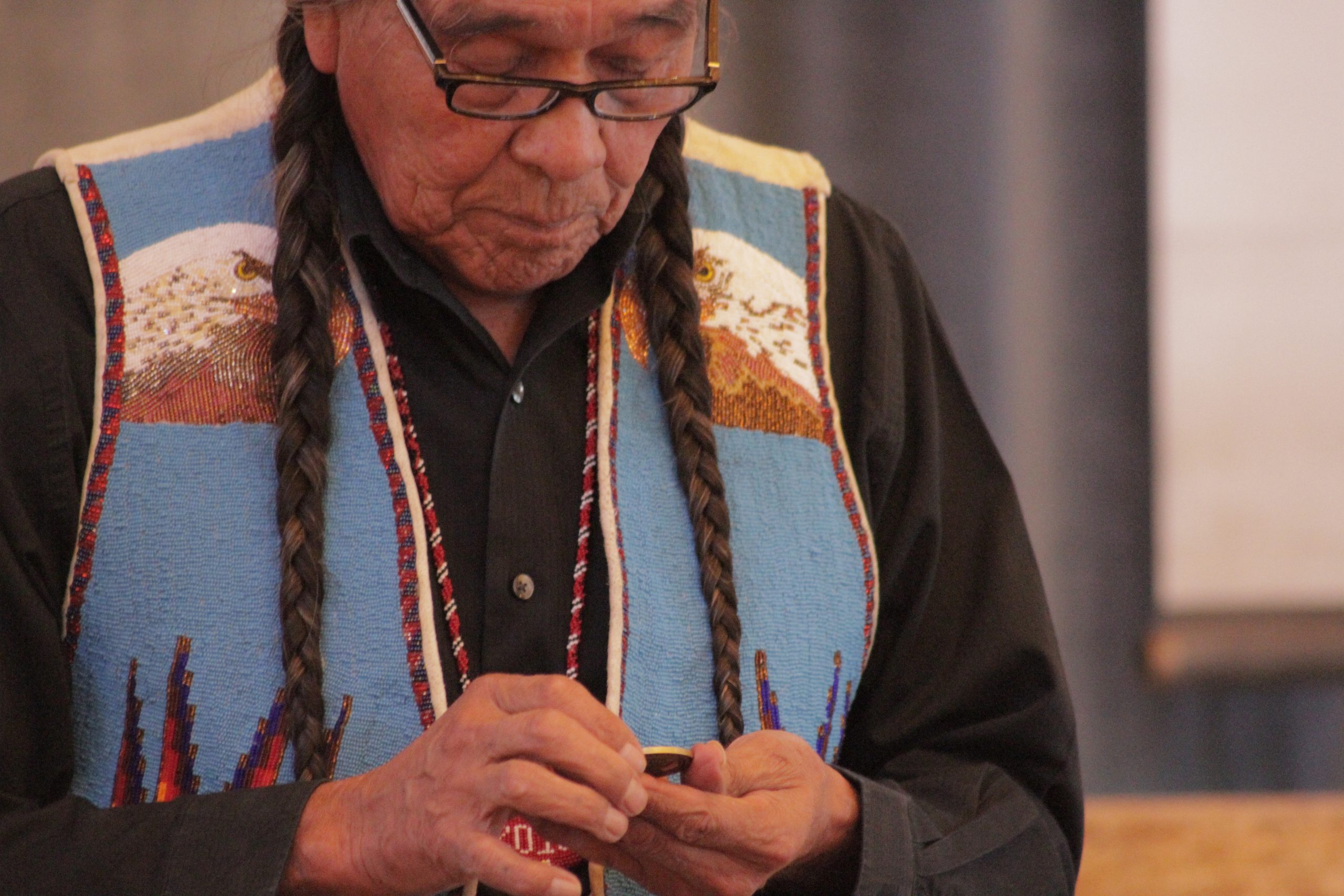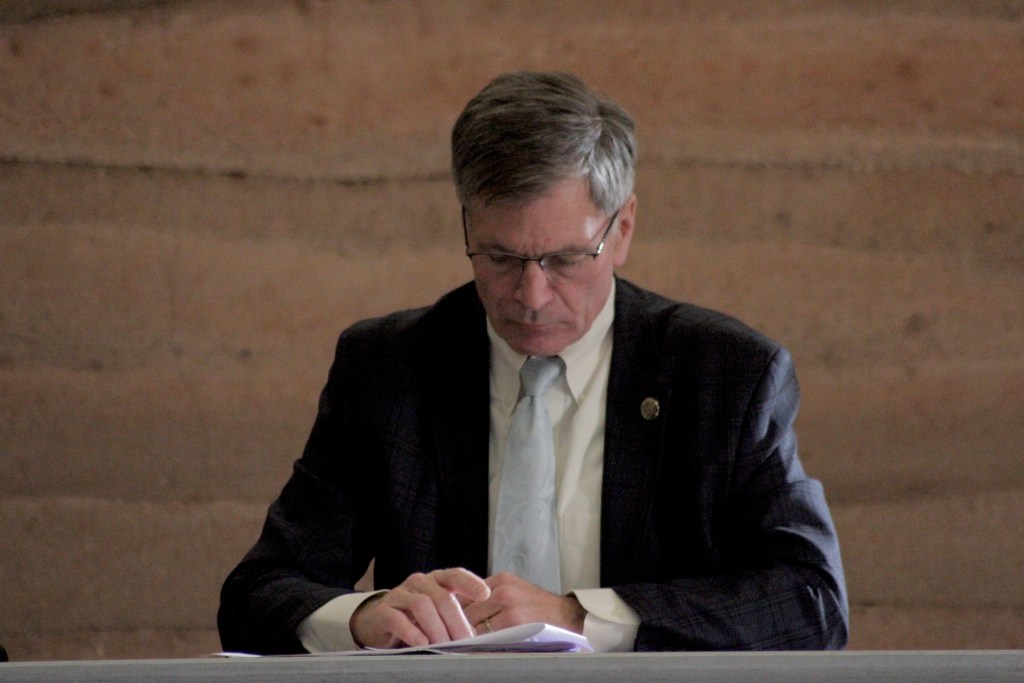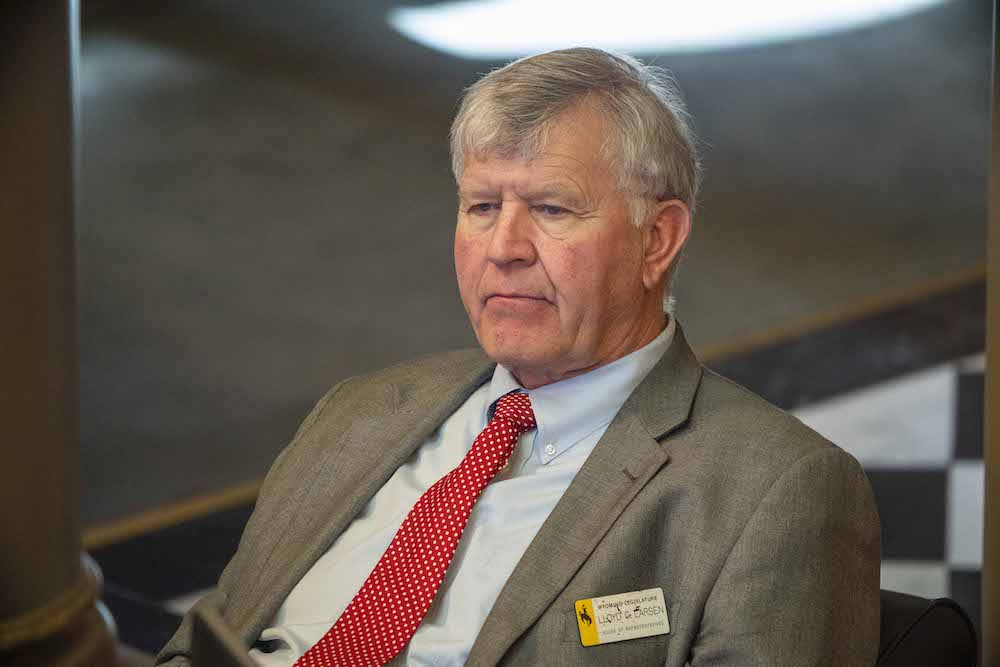Virginia-based PAC spreads misinformation in Wyoming legislative races


Keith Kennedy of Virginia was shocked to learn from a WyoFile reporter that his photograph appears on a political mailer for Keith Kennedy of Wyoming — a candidate for the Wyoming Senate.
That the glossy, full-color, eight-by-five-inch postcard granted him the title of state senator — a designation neither Kennedy has earned — was little consolation.
For 28 years, the virginian Kennedy did work for the U.S. Senate, serving as majority staff director during three separate periods as well as a two-year stint as deputy Senate sergeant at arms.
His official Senate photograph is the first image that turns up when googling “Keith Kennedy.”
It’s a stately portrait: Kennedy standing in a suit jacket and tie, smiling, with sunlight casting through a corridor behind him.
In early July, a cropped version of the portrait appeared on mailers sent to Albany County voters promoting a different Keith Kennedy for Wyoming Senate District 10, which encompasses the outer limits of Laramie and the rural communities of Bosler, Rock River, Centennial and Jelm.
“Whoever this candidate is, I don’t know him,” he said. “I don’t know what he’s running for. I don’t know what he stands for, but apparently he’s using my image just because he has the same name.”
In yellow font over a darkened image of a bear, the mailer alleges that Keith Kennedy is “the ONLY 100% pro-gun candidate in the race,” “a gun rights CHAMPION,” and “a leader with a BACKBONE.”

The mailer also gives the wrong dates for early voting in Wyoming and inaccurately infers that Keith Kennedy is the incumbent. Sen. Dan Furphy (R-Laramie), who is not seeking reelection, has represented the district since 2021. An out-of-state political action committee takes credit for the mailer in its bottom left corner.
“Paid for by Make Liberty Win,” the mailer reads. “Not authorized by any candidate or candidate’s committee.”
Candidate Keith Kennedy did not respond to WyoFile’s request for comment by press time.
Nearly identical mailers, mostly boosting candidates who are either members of, or ideologically aligned with, the hard-line Wyoming Freedom Caucus, have been distributed in communities across the state.
The mailers were among the first to hit Wyoming mailboxes after the candidate filing period closed for an election many expect to be particularly ugly and expensive as the two factions of the GOP battle for control of the statehouse.
‘Direct voter contact’
As a lifelong hunter, concealed-carry permit holder and member of the Laramie Rifle Range, Gary Crum objects to Make Liberty Win’s assertion that he’s against firearms. Crum is running against Kennedy in the Republican primary.
“I’m not going to do anything in the state Legislature that would limit gun rights,” Crum said. “It’s very spelled out on my website.”
Crum also objects to Make Liberty Win’s efforts to sway Wyoming voters.
“How can you believe what these out-of-state organizations are saying?” Crum said. “They don’t even know the candidate that they’re supporting well enough to have the right picture on the thing.”
While the mailers may appear haphazard, Make Liberty Win is a well-funded political machine.
As a Carey committee, according to OpenSecrets, the organization is a hybrid PAC that isn’t affiliated with a particular candidate. It can operate both as a traditional PAC — giving money directly to candidate committees — and as a super PAC that makes expenditures independent of candidates.
It raised about $8.7 million since the beginning of 2023, almost all of which came from donors in Texas, according to filings with the Federal Election Commission. No donations were listed from Wyoming.
The PAC lists Elizabeth Curtis as its treasurer and Petra Mangini as assistant treasurer in its filings. Neither returned calls to WyoFile. An email sent from WyoFile to the address listed in the filings also went unanswered.
The PAC is primarily funded by the Austin, Texas-based libertarian student activism organization Young Americans for Liberty, according to OpenSecrets. YAL’s aim, according to its website, is to “build the bench of liberty legislators at the state level who will advance a pro-liberty philosophy, ascend to higher office, and reclaim the direction of our government.” It claims to be “the most active and effective pro-liberty youth organization advancing liberty on campus.”
Young Americans for Liberty didn’t immediately respond to an email from WyoFile.
Goals
Make Liberty Win’s goal is to elect “250 liberty-defending state legislators,” according to its website, through “direct voter contact,” which includes mailers, door knocking, phone calls and texting.
A similar full-court press recently proved moderately successful in neighboring Idaho. While the PAC had a hand in the upset of a powerful 16-year incumbent and spent more than $700,000 in May alone, according to Idaho Education News, most of the candidates it opposed prevailed.
In Wyoming, the group began sending campaign materials and text messages and making phone calls in support of Wyoming legislative candidates in early July.
“As we prepare to celebrate Independence Day, it’s time to think about one of the great advantages of living in a Free America — choosing who will represent you in Cheyenne!” one of the early text messages said, encouraging readers to vote for specific candidates. The PAC sent out another text message on Friday claiming that its chosen candidates would “NEVER vote for gun control,” and would “ADVANCE pro-2nd Amendment legislation” and “Be a leading voice for FREEDOM in Wyoming.”

Some of the incumbent candidates that the PAC has endorsed, such as Reps. Jeanette Ward (R-Casper) and Bill Allemand (R-Midwest) are aligned with the Wyoming Freedom Caucus, a hard-line far-right bloc of the Wyoming House of Representatives.
Allemand said he hadn’t heard about the PAC or seen any of its materials when WyoFile reached him by phone. Ward told WyoFile that she was grateful for the PAC’s support. “They seem to have gotten some things mixed up, but I’m not responsible for that,” she said.
Errors
The PAC’s materials have several errors. They say that early voting is from July 17 through Aug. 19, when the dates are actually July 23 through Aug. 19. Some mailers were sent to the wrong district. They also represent some of the candidates as the current lawmaker in their respective districts when, in fact, these candidates are challenging an incumbent.
What’s more, some candidates say the PAC’s materials are misleading.
“If you look at my voting record, I’m a 100% pro-gun candidate,” incumbent Rep. Tony Niemiec (R-Green River) told WyoFile. Make Liberty Win had sent mailers in support of Niemiec’s primary opponent Marlene Brady, a political newcomer who hasn’t served in the Legislature before.

“They’re just trying to put these candidates in that have no voting record,” Niemiec said.
Brady said in a Friday text message to WyoFile that she’s “grateful” for the PAC’s “acknowledgement that I am the only 100 pro-2A candidate” in her race. But she added that she wished the PAC “had been more careful proofreading their materials before sending them.”
Christopher Dresang, a new candidate challenging Rep. Tony Locke (R-Casper) in House District 35, said he messaged Make Liberty Win through its website to complain about the claims on the organization’s pro-Locke mailers.
“I wanted to know where they got their data, and I said, ‘I’ve never filled out anything that would show that I’m not in full support of the Second Amendment and its application,’” Dresang told WyoFile. (He had not heard back from the PAC as of Monday morning.)
Robert Hendry, a Make-Liberty-Win-supported candidate challenging incumbent Sen. Charles Scott (R-Casper) in Senate District 30, took issue with the “100% pro-gun” message for a different reason.
“I’m not sure I’m 100% on that. I think there are places where we don’t need to pack guns,” Hendry told WyoFile.
“We live out in the country, and I’ve always got a firearm with me somewhere. So I’m plenty pro gun, but there are places we don’t need to pack them.”
Though Make Liberty Win is based in Alexandria, Virginia., the mailers show a Cheyenne, Wyoming address.
The PAC has also distributed door hangers. One of these door hangers supporting Republican political newcomer Steve Johnson, who is running against incumbent Rep. David Zwonitzer (R-Cheyenne) and fellow challenger Cayd Batchelor in House District 8, focuses on parental rights, immigration and foreign influence in the U.S. Like the mailers, it also misrepresents Johnson as a current representative.
Johnson declined to comment on the Make Liberty Win-sponsored door hanger when reached by phone Thursday.
“I think you’re a leftist newspaper, and I’m not going to talk with you,” he said.
Another door hanger supporting Ward focuses on lowering taxes, Second Amendment rights and school choice. “She is ready to do whatever it takes to prevent the leftist agenda from going any further in our state,” the mailer says of Ward.

The candidates that WyoFile spoke with said they didn’t know the PAC would be sending out materials on their behalf. Bryce Reece, a Republican first-time candidate challenging incumbent Rep. Jim Anderson (R-Casper), told WyoFile that he recalled responding to the organization’s questionnaire but wasn’t alerted that its PAC would be sending out materials in his support. The first knowledge he had about this, he said, was when he went door knocking one evening and people said they had already received a mailer from him, even though he hadn’t yet sent any.
“Anytime somebody is positive about you, it’s flattering. But I’m not sure that that’s going to make people’s decision. I hope that a mailer like that isn’t what makes up people’s minds about me,” Reece said, noting that he and his wife spent significant time building his campaign website where voters can learn much more about his policy stances.
“A mailer like that, it tells you where I’m at on Second Amendment, but it doesn’t really tell you everything that there is. I hope that voters are trying to educate themselves.”

While candidates said they didn’t know these materials would be disseminated, some are familiar with the PAC’s associated organization, Young Americans for Liberty. Allemand, a Wyoming Freedom Caucus member, told WyoFile that he attended the organization’s convention in Orlando, Florida last August. Other Wyoming lawmakers also attended the convention last year, and more were invited, Allemand said. (He declined to share the names of the other lawmakers.)
The convention, he said, was packed with hundreds of college students and legislators from around the country. Conservative firebrands like former 2024 presidential candidate Vivek Ramaswamy, former Texas Rep. Ron Paul and Kentucky Republican Rep. Rand Paul gave speeches. Allemand got to shake Rand Paul’s hand.
“It was a very electrifying event,” Allemand said. “Just like everything, they’re not 100% perfect, but I look at YAL as a good organization.”
The primaries are on Aug. 20.
The post Virginia-based PAC spreads misinformation in Wyoming legislative races appeared first on WyoFile .


































